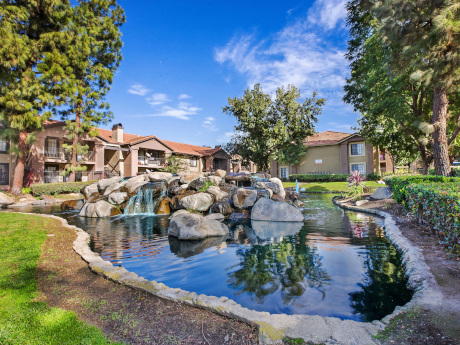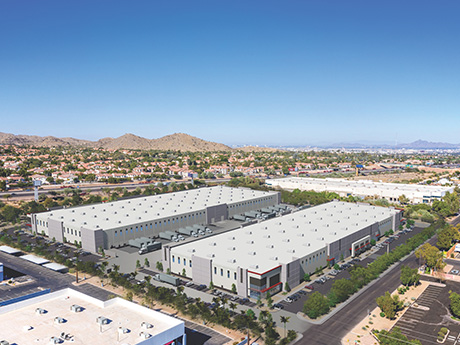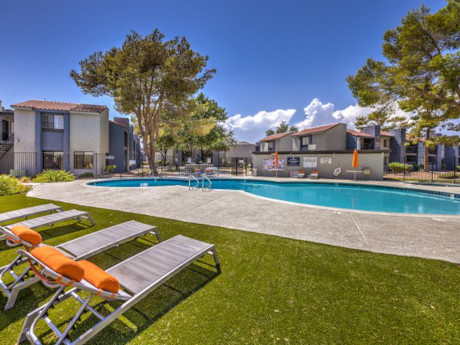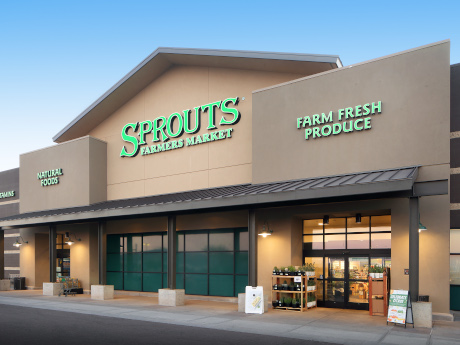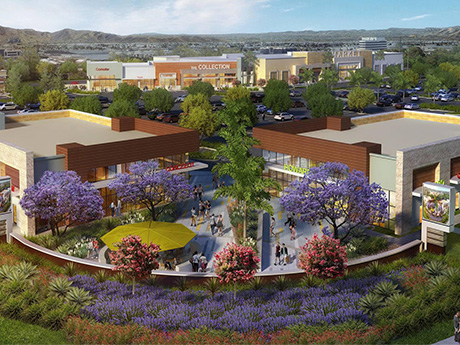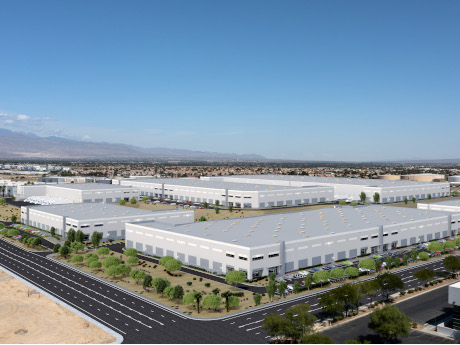— By Shane Shafer, Managing Director, Northmarq — The Inland Empire submarkets have maintained rent increases, low vacancy rates and employment growth. Plus, unlike other Southern California markets, the IE has seen a migration into the area — not out. The population of the Inland Empire region in an average year expands by about 50,000 residents. This is the fifth largest gain among the largest 50 metros, per 2021 Census numbers. A Jobs-Rich Market Gaining Momentum Local employment showed signs of growth and resurgence, adding jobs each of the past four quarters. Year-over-year total employment increased by more than 83,000 positions, which equates to a gain of more than 5 percent. Contrast this with other markets, and you can see why the Inland Empire is on most investors’ top 10 lists for buying, and why expectations are so high for the market to have continued rental growth. The logistics sector is one of the biggest and fastest growing in the United States. These jobs have consistently grown over the past 10 years, increasing by more than 10 percent. This year, Amazon inked a record-setting 4.1-million-square-foot facility in Ontario, while companies like Target, Shopify, Best Buy, AutoZone and others also made large commitments. The …
Western Market Reports
— By Rob Martensen, Senior Executive Vice President, Colliers International — There are a lot of questions being asked about the Phoenix industrial market as we turn the calendar to 2023. Having been an industrial broker in this market for 25 years, I have seen many ups and downs, which are historically driven by the residential construction market. Phoenix used to be a one-industry town…and that industry was growth. Sure, we’ve had large companies like Motorola, Avnet and Intel, but the industrial market has been mostly driven by people moving to Arizona and buying houses and household goods. Phoenix has transformed in the past five years into a thriving city that now supports many industries. The largest is advanced manufacturing. This includes semiconductors, battery manufacturing, electric vehicle manufacturing and all supporting businesses. Intel is in the process of a $20 billion expansion to their existing facility, while Taiwan Semiconductor Manufacturing Company (TSMC) is under construction on a $12 billion chip making factory. TSMC recently announced it’s going to immediately start on Phase II of this factory, which will be another $28 billion spent in Phoenix. It is estimated that 160 new companies have moved to Phoenix to support these two new …
— By Jerry Holdner, Southern California Region Lead, Innovation & Insight, AVANT, Avison Young — The industrial market in the Inland Empire has been performing beyond what most of the industry projected over recent quarters. The region boasts a low unemployment rate of 4.2 percent, as of November 2022, which is below the anticipated 5.4 percent estimated a year ago. It is important to highlight, however, that job creation has been uneven. Leisure and hospitality jobs are still underwater, for example. The bright spot is that high-value-added jobs in a broad range of sectors like technology, software development, aerospace, scientific research, medical products and pharmaceutical development continue to grow, which bode well for the industrial sector. Here are some key market indicators, according to Avison Young’s fourth-quarter Inland Empire Industrial Insights report: • There was 38.9 million square feet of new industrial construction underway at the end of 2022. This is down 37.1 percent as compared to the end of 2021 when 28.4 million square feet was under construction. • There was 13.9 million square feet of positive absorption in 2022, down 53.5 percent when compared to 2021’s record-high total of 29.9 million square feet of positive absorption. This represents 2.5 percent …
— By Andrew Cheney, Principal, Lee & Associates — The metro Phoenix office market continues a slow recovery as it battles the nation’s highest rates of both sublease growth and inflation. Starting off the fourth quarter at only 532,000 square feet (year-to-date), net absorption in Greater Phoenix remained well off the 20-year average mark of 1.6 million square feet. Direct office vacancy stands at a seemingly high figure of 17.6 percent. However, this is in line with the 20-year average of 18 percent. Currently, there are six key trends impacting Phoenix’s office market. Small tenants are back in the office. I imagine most brokers will report that the highest concentration of active, touring prospects are in the market for less than 10,000 square feet. These company sizes want to be in the office in metro Phoenix, and not just a few days a week. High-quality spec suites rule. Landlords recognize that smaller tenants are driving leasing activity — and that these small tenants will not wait for a build-out. Instead of holding one or two spec suites in inventory at any one time, landlords are building out large batches of five to seven spec suites at a time. And they’re spending money to build …
By Jared Glover, Director of Investment Sales, Berkadia The Las Vegas multifamily market started to feel the effects of higher interest rates alongside persistent inflation as the third quarter ended. Thankfully, properties still experienced trade-outs and overall in-place rent growth, though year-over-year growth began to moderate, coming in near 8 percent. Loss to lease capture remains, although at a slower pace than prior quarters, with average market rent at $1,515. The third quarter also saw a 3 percent decrease in occupancy, setting at 93.6 percent, after experiencing record occupancy throughout 2021. On the transaction front, we have seen a dramatic shift in cap rates. This is a direct result of the Fed’s tightening. Within a six-month span, cap rates widened upwards of 150 basis points — from low to mid-3s to 5 and trending up, depending on product type. The homogenous nature of national cap rates in 2021, with most markets trading in the 3.5 range, seems to have shifted back to historical norms as the primary/coastal markets once again demanded a premium versus secondary or tertiary markes. Both Monterra and the Boulevard traded north of a 5 cap on in-place numbers, speaking to these latest cap rate trends. Just four months ago, a …
— By Kyle Yocum, first vice president, and Phillip Woodford, senior vice president, CBRE — The Inland Empire office market is experiencing a rise in cost, much like all sectors and markets throughout the U.S. As tenant improvement costs continue to increase, it’s becoming more and more challenging to find win-win situations with landlords and tenants. Landlords are having to increase their TI allocations, while tenants are having to show more flexibility as it relates to working with existing space. That, or they must cover a portion of the TI costs themselves or commit to longer-term leases to help the deal pencil for the landlord. Due to TI costs, both parties need to meet halfway and make concessions. I think one of the reasons our market has done well is that we are a smaller market. Most parties involved seem to understand the give and take needed to make deals pencil for both sides. Concessions are entirely contingent on TI costs, with landlords offering significant amounts of free rent and slight discounts on the rental rate if the TI costs are low. If a tenant is seeking major changes to the space, landlords are staying close to or at their …
— Kyle Davis, Sales & Leasing Agent, Commercial Properties Inc., a CORFAC International Firm — A market cooldown is likely in 2023 as interest rates rise and the investor pool becomes more cautious to some degree. I believe many investors recall lessons from the Great Recession and are not as significantly overleveraged, which means the effects of this market correction may not be nearly as drastic. Phoenix’s retail market also has some bright spots. The area’s retail net absorption was positive at more than 1.5 million square feet, with vacancy rates down to 5.1 percent at the end of the fourth quarter of 2022. This is compared to the 1,071,783 square feet of absorption and 6.6 percent vacancy rate a year ago. Many look at factors like unemployment, interest rates, housing starts, etc., to speculate about the coming market. What will impact our industry most directly, however, is how the lending market reacts to these indicators. As with 2008 and 2020, creditors may look at the same data points as investors and lower their risk profiles significantly faster than investors are able to counteract. There will be many commercial property loans set for refinancing in the near or upcoming future, as commercial property …
— Brad Umansky, President, Progressive Real Estate Partners — The retail vacancy rate for the Inland Empire has dipped below 6 percent for the first time since 2008. But there is a dramatic difference between then and now. From 2006 to 2008, there was about 20 million square feet constructed, compared to only 2.8 million square feet from 2020 to 2022. Using Costar’s data, retail rents rose 5.7 percent in the past year, which was just under the 6 percent rent growth in 2021. These are the two highest years of rent growth in the past 15 years. In my opinion, the market has regained equilibrium, which is about where we were at in 2019 before the bottom fell out the following year. The substantial development of the early 2000s required almost a decade to fully absorb. COVID then created 1.5 million square feet of negative absorption in 2020, which has all been fully absorbed, plus another 3.3 million square feet of net absorption in 2021 and 2022. The Inland Empire added more than 74,000 jobs in the past year, and the region’s population continues to grow despite the decline in California’s overall population. People are attracted to the employment opportunities, lower cost of …
— By John Kobierowski, President and CEO, ABI Multifamily — As we enter a New Year, investors are looking for multifamily markets that will continue to offer consistent returns and stability. Thankfully, Phoenix is still regarded as one of the darlings of the multifamily markets. Investors from both coasts are talking to us about the Phoenix market again after not having invested here in a while — or, in some cases, ever. They say they’re realizing Phoenix just might be one of the few markets with predictable multifamily growth. Companies locating in Phoenix are creating tremendous job growth. For example, Taiwan Semiconductor recently announced an investment increase in the manufacturing plant it’s currently building in Phoenix — from $12 billion to $40 billion. That might be one of the largest single investments in the U.S. We’re eagerly anticipating the Southwest winter and spring events that draw the envious attention of a national audience, including WM Phoenix Open golf tournament, Super Bowl, Barrett Jackson collector car auction and Cactus League Spring Training. Our bright, sunny skies, green grass, and smiling people in t-shirts and flip flops will stand in stark contrast to those stuck in freezing cold winter temperatures and paying expensive home heating costs. …
By Dean Willmore, Executive Vice President; Kyle Kirchmeier, Associate; Alex Stanisic, Vice President; and Laura Wilhelm, Senior Field Research Analyst, CBRE Las Vegas’ current industrial market is surprisingly resilient. There is, of course, a possibility of planned projects being put on hold or not moving forward at all due to rising inflation and economic uncertainty, but leasing activity hasn’t slowed. Regardless of never-before-seen rent growth, record-low vacancy and a marked increase in asking lease rates every 60 days, the market still may not have peaked. As of the third quarter of 2022, the average asking lease rate was $1.19 per square foot (triple net), and the overall vacancy rate remained at a very low 1 percent. However, industrial/flex space in the 2,000- to 5,000-square-foot range, which is still dealing with the effects of the pandemic, has shown no noticeable rent growth. Some landlords are even offering leasing incentives to attract tenants. If the market contracts in 2023, smaller tenants in this size range will be the first to see its effects. Nearly half of the 17 million square feet under construction during the third quarter was pre-leased, and nearly 80 percent of those projects were in North Las Vegas. The largest lease of the quarter occurred in the submarket, with …


